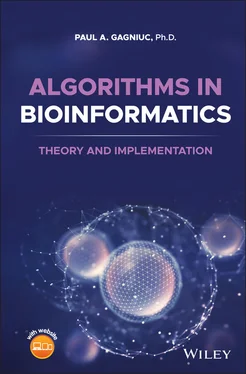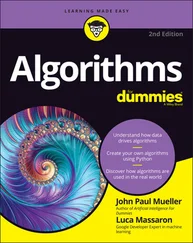1.5.10 Eukaryotic vs. Prokaryotic Regulation
In prokaryotes, gene expression is primarily regulated at the level of transcription. Moreover, transcription and translation occur almost simultaneously in the cell cytoplasm. Eukaryotic regulation of gene expression is dynamically orchestrated at several levels, such as epigenetics (chromatin and TF), transcription, post-transcription, translation, and post-translation (further processing of the amino acid polypeptides from a primary structure to more complex, secondary, tertiary structure, and so on). Eukaryotic gene expression occurs with a delay when compared to prokaryotes, as transcription takes place within the nucleus and translation occurs outside the nucleus within the cytoplasm.
The information in DNA molecules supports a continuous biochemical feedback inside the cell, which self-regulates according to external and internal stimuli (i.e. nutrients, signal molecules, pressure, electromagnetic radiation, and so on). Through energy consumption, this continuous process is maintained in a permanent imbalance above the “inanimate” background. From our reference system, this dynamic self-regulating biochemical feedback is considered life.
How many species really? Unfortunately, life is not as diverse as previously believed [74, 75]. For more than 250 years, our species has cataloged all the other land and water species at our disposal, and continue to do so. Based on this census, the tree of life contains a total of 1.43 million known species, from which almost 1.42 million are eukaryotes and 12k species are prokaryotes ( Table 1.1and Figure 1.1) [74]. Most of the time, real census ruins the “feng shui” of predictions. In total, even the most enthusiastic predictions forecast between 8 million and 11 million species in existence [74, 76, 77].
However, under the heavy umbrella of uncertainty, predictions and census rarely match when it comes to the total number of species on earth. Among the cataloged species for the tree of life, animal species constitute 78% and plant species represent 15%. Out of a total of 1.4 million species, about 1.2 million species live on land and 19k live in the aquatic environment ( Table 1.1).
Table 1.1 The total number of known species.
Source: Refs. [74, 283].
| Kingdoms |
Land |
Water |
Total |
| Eukaryotes |
| Animals |
953k |
171k |
1125k |
| Fungi |
43k |
1k |
44k |
| Plants |
216k |
9k |
224k |
| Protists |
21k |
13k |
34k |
| Prokaryotes |
| Bacteria |
10k |
1k |
11k |
| Archaea |
1k |
0k |
1k |
| Total |
1244k |
194k |
1439k |
The table shows the total number of known species on earth. The data are divided into two major categories on rows, namely prokaryotes and eukaryotes; and two major categories on columns two and three, namely the environment. Note that 1k means 1000 species.
1.7 Approaches for Compartmentalization
Compartmentalization is not a condition for life; however, a closed environment for biochemical containment might be. Most likely, unicellular species that evolved in water had fewer survival issues related to mechanics and gravity. To obtain a specialization, some of these species evolved a cooperation between internal biochemical processes rather than between individual cells. Thus, their volume and shape increased to the point where a single cell began to resemble a multicellular organism. Such unicellular organisms contain multiple nuclei, and for historical reasons are called coenocytes (Greek –coeno, “common”; cyte, “box”). Nevertheless, the virtual “cells” of these unicellular organisms are not defined by a physical barrier. This virtualization may be achieved only through controlled biochemical interactions between concentration gradients of different types of molecules (i.e. from gradients of simple nucleic acids, amino acids, fatty acids and sugars, up to RNA and proteins). Spatially spaced point sources of such chemical and biochemical gradients can form a well-organized virtual structure in these unicellular organisms. Moreover, the biochemical versatility can continue up to the point of inclusion of smaller unicellular species to form a biochemical symbiosis.
1.7.1 Two Main Approaches for Organism Formation
Life shows two main approaches for organism formation. The first approach forced a cooperation between biochemical processes (virtual cells in one physical boundary). The second approach forced a cooperation for gradual specialization among individual cells of the same species (or even between species). Interestingly, the second approach shows a lower entropy than the first. However, cooperation between individual cells did not rule out further specialization between biochemical processes inside individual cells.
1.7.2 Size and Metabolism
Competition and gravity preclude the emergence of unicellular organisms over a certain size. Moreover, gradient-based biochemical signaling and interactions would be inefficient on long distances inside large unicellular organisms. Multicellular organisms seem to have found a balance between the speed of response and the size of the cells. Small cells have a larger surface area relative to their volume. Each unit of volume can exchange gases and nutrients at a higher rate compared to larger cells. Note that the principle is equivalent to smaller salt granules that dissolve faster in water than large ones. Cooperation for development of cell specialization in the direction of a circulatory system formation ensured an optimal exchange with the outside environment and a fast response for the entire organism. In the case of very large unicellular organisms, the response time for any stimulus may be dictated by distances inside the cell and the metabolic rate. For instance, a biochemical interaction between two points in the cytoplasm of such an organism would require time and high amounts of messenger molecules to diffuse in a large volume until the target is stochastically encountered. In other words, “time contracts” for giant unicellular organisms. It is likely that giant single-celled organisms have existed in the distant past. However, competition with smaller unicellular organisms with higher response times may have eliminated them from the evolutionary chain.
Physical sizes of different organisms provide an intuitive assessment over their complexity ( Table 1.2.). The comparison between the extremes of eukaryotes can be particularly important for a good view of nonlinearity that exists between entropy and size, of which, we will discuss about later. This subchapter briefly discusses the physical sizes of different unicellular and multicellular eukaryotic organisms.
Table 1.2 Extreme sizes of unicellular organisms.
| Unicellular organisms |
Eukaryotes (μm) |
Prokaryotes (μm) |
| Min |
0.8 |
0.15 |
| Max |
300 000 |
1400 |
The table shows the minimum and maximum physical dimensions of unicellular organisms in both eukaryotes and prokaryotes. The values represent averages of the measurements published in the scientific literature and are presented in micrometers.
1.8.1 Sizes in Unicellular Eukaryotes
Eukaryotic unicellular organisms provide important clues to the schism that led to multicellularity. Also, single-celled eukaryotic organisms are particularly important biological models that can lead to a deeper understanding of the fundamental mechanisms behind the evolutionary process.
Читать дальше












